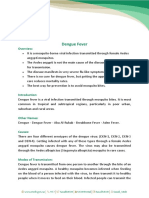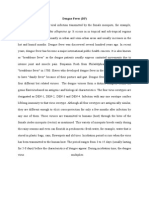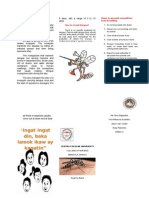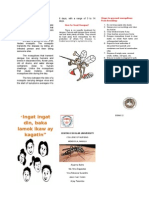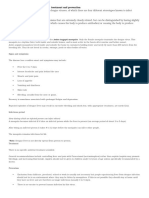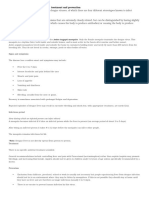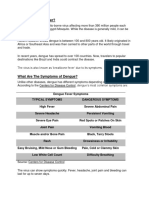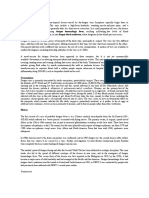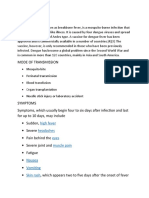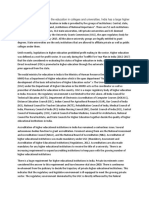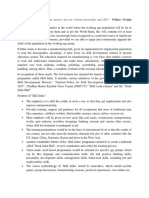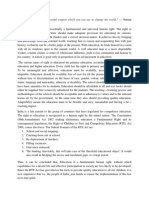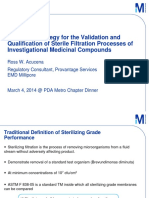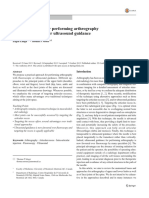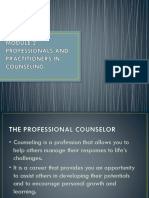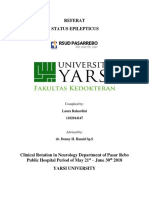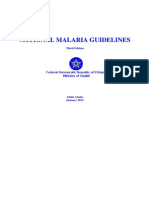Dengue fever, also known as breakbone fever, is a mosquito-borne infection that can lead to a
severe flu-like illness. It is caused by four different viruses and spread by Aedes mosquitoes
which are found throughout the world. Around 2.5 billion people, or 40 percent of the world's
population, live in areas where there is a risk of dengue transmission.
The symptoms of dengue fever are severe headache, pain in the muscles and joints, and rash that
can be described as small red spots. Some patients experience gastritis, diarrhea, vomiting and
abdominal pain. Dengue fever usually starts suddenly with a high fever, headache, pain behind
the eyes, and pain in the muscles and joints. A rash usually appears 3 to 4 days after the start of
the fever. Nausea, vomiting and loss of appetite are common.
There are four dengue viruses that cause dengue fever. They are all spread by a species of
mosquito known as Aedes aegypti, and more rarely by the Aedes albopictus mosquito. Aedes
aegypti originated in Africa, but nowadays it is found in tropical areas around the world,
especially in and around areas of human population. The virus is transmitted from an infected
mosquito to a human. A mosquito bites a person who is infected with the dengue virus, and the
virus is passed on when the mosquito bites someone else. It is possible to have dengue fever
more than once. A second infection carries a higher risk of developing a harsher form.
Dengue is a virus, so there is no specific treatment or cure. However, intervention can help,
depending on how severe the disease is. For milder forms, treatment includes:
Preventing dehydration: A high fever and vomiting can dehydrate the body. The person should
drink clean water, ideally bottled rather than tap water. Rehydration salts can also help replace
fluids and minerals.
Painkillers, such as Tylenol or paracetamol: These can help lower fever and ease pain.
Non-steroidal anti-inflammatory drugs (NSAIDs), such as aspirin or ibuprofen, are not
advised, as they can increase the risk of internal bleeding.
More severe forms of dengue fever may need:
intravenous (IV) fluid supplementation, or drip, if the person cannot take fluids by mouth
blood transfusion, for patients with severe dehydration
No vaccine can protect against dengue fever. Only avoiding mosquito bites can prevent it.
Anyone who lives in or travels to an at-risk area can use a number of ways to avoid being bitten.
Clothing: Reduce the amount of skin exposed by wearing long pants, long sleeved shirts, and
socks, tucking pant legs into shoes or socks, and wearing a hat.
Mosquito repellents: Use a repellent with at least 10 percent concentration of diethyltoluamide
(DEET), or a higher concentration for longer lengths of exposure. Avoid using DEET on young
children.
�Mosquito traps and nets: Nets treated with insecticide are more effective, otherwise the
mosquito can bite through the net if the person is standing next to it. The insecticide will kill
mosquitoes and other insects, and it will repel insects from entering the room.
Door and window screens: Structural barriers, such as screens or netting, can keep mosquitos
out.
Avoid scents: Heavily scented soaps and perfumes may attract mosquitoes.
Camping gear: Treat clothes, shoes, and camping gear with permethrin, or purchase clothes that
have been pretreated.
Stagnant water: The Aedes mosquito breeds in clean, stagnant water. Checking for and
removing stagnant water can help reduce the risk.

